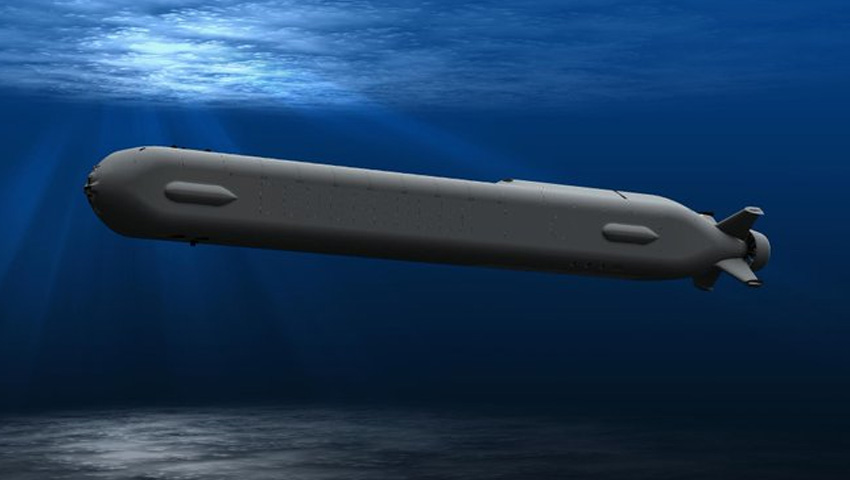With the construction of Australia's new nuclear-powered fleet expected to begin later within the decade, unmanned 'Orcas' can shore-up the Royal Australian Navy’s undersea war fighting capabilities ahead of the delivery of the next-generation fleet.
The Commonwealth government’s recent decision to scrap Naval Group’s $90 billion SEA 1000 contract has raised new questions regarding the delivery timeline for a new generation of undersea warfare vessels to replace the ageing Collins Class fleet. Naval Group’s original contract to deliver 12 Attack Class submarines over the coming decades had been heavily scrutinised, with full operational capability not expected until 2054.
However, it remains unclear whether the new trilateral AUKUS alliance — which will see nuclear-powered submarines built in South Australia as part of a knowledge sharing arrangement —will shorten the wait for a new fleet.
Further details regarding the fleet’s capability, cost, project logistics, and the delivery timeline are to be fleshed out over the next 18 months. Defence sought to address potential capability gaps by expanding planned upgrades of the Collins Class vessels.
In June, Minister for Defence Peter Dutton confirmed that approximately $6 billion would be invested in a life-of-type extension (LOTE) for all six of the Royal Australian Navy’s Collins Class submarines.
Defence had initially planned to upgrade just three of the platforms.
But some observers have proposed alternative stop-gap solutions to ensure the Navy’s undersea warfare capability can match and deter evolving threats.
Michael Shoebridge, director of the defence, strategy and national security program at the Australian Strategic Policy Institute (ASPI), argues that the government should consider procuring the ‘Orca’ — an extra-large unmanned undersea vehicle developed by Boeing and Huntington Ingalls Industries for the US Navy.
Five Orcas are scheduled to be built by the end of 2022 as part of a US$274 million ($354 million) contract signed in 2019.
“The unmanned submarine has a range of about 6,500 nautical miles (12,000 kilometres) and can perform dangerous, dirty and dull work like intelligence-gathering, surveillance and deployment of other systems (such as smart sea mines), with a development path up to and including deployment of other weapons to attack adversary ships, submarines and other systems,” Shoebridge writes.
“They will probably work best as part of a manned–unmanned undersea team, less closely tethered but a bit like the rapidly developed ‘Loyal Wingman’ unmanned aerial vehicle that the Royal Australian Air Force is developing and testing with Boeing Australia.”
Shoebridge concedes that there would be “plenty to work out” to ensure the Royal Australian Navy can operate Orcas effectively, but notes there’s a “practical limit” to how much planning and preparation can be done with experiments and demonstrations.
“Concepts for use and ways to resolve difficult problems like tasking and controlling undersea systems will be resolved much faster once navy personnel get their hands on live systems; that’s what’s happened throughout the history of warfare,” he writes.
The ASPI analyst proposes that the RAN collaborates with US Navy, along with US and Australian industrial partners, to develop the Orca, adding that this would “bring the most undersea combat power most quickly to Australia’s military”.
He continues: “It’s also the best way for Defence to create new challenges for adversaries that are thinking of coercing Australia or increasing their military presence in Australia’s near region.”
Shoebridge goes on to write that Orcas working with upgraded Collins Class submarines would “change the calculus around Australian defence” ahead of the delivery of the next-generation fleet.
This, he claims, would also ensure the Future Submarine and its crews are “designed and prepared” to operate with unmanned systems. Shoebridge argues that Defence has an opportunity to negotiate an attractive deal for the Orca with Boeing, with its commercial business severely impacted by travel restrictions imposed in response to the COVID-19 pandemic.
“Combine this with the confidence that working with Boeing Australia on the Loyal Wingman must be giving both the government and Defence,” he adds.
Shoebridge concludes: “The US Navy’s example of spending US$274 million to acquire five Orcas that are all being delivered within three years of contract shows the affordable, rapid change that Australia joining this program could bring to our own naval capability.
“Wouldn’t it be welcome to have some fast-moving good news out of Defence when it comes to submarines? It’s time to push Defence to move faster than it will left to itself.”
This article originally appeared in the Defence Connect maritime special edition, which can be viewed here.


